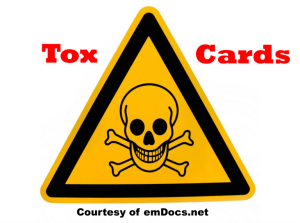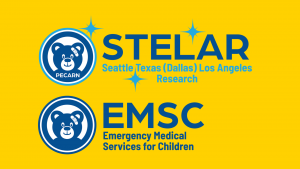Author: Brit Long, MD (@long_brit, EM Chief Resident at SAUSHEC, USAF) // Edited by: Jennifer Robertson, MD and Alex Koyfman, MD (EM Attending Physician, UT Southwestern Medical Center / Parkland Memorial Hospital, @EMHighAK)
Case:
A 72 year old female presents to the emergency department (ED) with a chief complaint of myalgias. She has a history of congestive heart failure (CHF) and chronic renal disease on dialysis. Her vital signs (VS) are normal. To add to the history, a nurse tells you that the patient was in the same ED 10 hours ago with the same chief complaint.
An important aspect of emergency medicine is disposition. The majority of patients will directly leave the ED and in fact, over 80% of ED visits result in discharge to home or non-acute care.1 Why is discharging patients a potential problem? Unfortunately, ED discharge can be a high risk situation. At times, providers can be so focused on ED flow and opening beds, that aspects of a patient’s presentation, history, study results, and re-examinations may be missed. Approximately 3% of patients return within 72 hours, with one in four of these patients requiring admission.2 In up to 30% of these cases, the return visit was likely related to a medical error or potential mismanagement of a medical issue on the first visit.2,3 The prevalence of death within 7 days of ED discharge is estimated to reach 50 per 100,000 discharges, with half of these unexpected.2-4
Important factors of evaluation that may initially be missed:
Emergency physicians see all types of patients with a variety of issues. Several chief complaints are associated with decompensation after discharge and even admission to the intensive care unit (ICU). These chief complaints include headache, back pain, and abdominal pain. Surprisingly, chest pain is one of the lowest bounce back complaints. Dyspnea is another common reason that patients return or decompensate after discharge. However, interestingly, dehydration is the most common diagnosis associated with an ED bounce back and hospital admission. 2 Thus, careful evaluation of the patient must be completed before discharge and this includes adequate pain control. 2-5
Other studies have evaluated factors that predict patient decompensation, bounce backs, and hospital admissions after ED discharge. These factors include older age (above 70 years), a recent fall in an elderly patient, male gender, abnormal vital signs, chronic disease with decompensation (particularly renal disease and heart failure), atypical presentation, mental disability, substance abuse, and psychiatric problems.4-7 Other factors include skilled nursing facility use, leaving against medical advice (AMA), and utilizing Medicaid insurance.8,9 In particular, older age is associated with increased death after discharge.
Where do providers make mistakes? Incomplete or different histories of present illness (HPI) obtained for the same visit, incomplete physical examinations, a change in disposition from admission to discharge, poor differential diagnoses, and underestimation of a patient’s morbidity and mortality are associated with increased risk of decompensation.6-8
How can we do better?
Make sure the patient’s primary concern and chief complaint are addressed, as discussed above. Based on the book Bouncebacks! Emergency Department Cases: ED returns, several steps can help decrease dangerous discharges.3, 10
1. Identify patients at high risk. These patients include atypical presentations, unusual problems, chronic condition decompensation, abnormal vital signs, mental disability, advanced age, language barriers, unmet expectations, upset patients, and dehydration. All of these markers have been shown in multiple studies to predict clinical decompensation after discharge, as well as potential for bounce back to the ED. Address the complaints, and ensure the history you have obtained is accurate.2-7
– During your history taking, make sure to keep an open mind so that atypical presentations are not missed. Ask open-ended questions. Ask why the patient came to the ED and what events led up to the visit. Use each patient’s risk factors to target your questioning.
2. Following step 1, take the extra time to consider the most serious possibilities on your differential. Carefully re-evaluate the history, exam, vital signs, and studies completed. Are there any complaints not addressed? Are there any abnormalities that you have not explained? For the chest pain patient, is it ACS, PE, dissection, pneumothorax, pneumonia, tamponade, esophageal rupture? For the abdominal pain patient, have you considered AAA, mesenteric ischemia, appendicitis, cholecystitis, pelvic pathology? What could harm or kill the patient before he or she is seen in a follow up visit?
– Under this step, you must look carefully at the vital signs. Tachycardia is one of the most common vital signs associated with unexpected decompensation and return to the ED. Ensure the vital signs normalize before discharge. If they do not, consider what you could be missing, and either observe for a period of time or admit the patient.
– Carefully review all of the studies and notations in the record, including your documentation, the nursing notes, and the triage note. Make sure the history you have obtained is similar to other documentation and that no other issues were missed. While you are seeing other patients, the nurse at the bedside can see things that you may have initially missed.
3. Next, make sure that each discharged patient has adequate follow up. This will ensure that the patient is seen by a provider in an appropriate amount of time to address any other issues or concerns the patient may develop after his or her ED visit.
- Carefully go over the discharge instructions. According to Dr. Greg Henry, MD, your discharge instructions should be action and time specific. Again, take the time to sit with the high-risk patient and family and discuss the a) diagnosis, b) medications, c) home care, d) follow-up, and e) return precautions. Patients unfortunately do not often understand your instructions, have them repeat the instructions back to you and also ask if they have any questions. Give them time to explain their understanding of the instructions to you, rather than the usual 14 seconds found in a study from Ann Emerg Med.11 One study from Acad Emerg Med in 2012 demonstrated that 92% of patients misunderstand at least one of the five parts discussed above of discharge instructions unfortunately, and most of all, patients had the least understanding of return precautions.12 A helpful sample discharge instruction sheet is shown below from J Accid Emerg Med:13
5. If something continues to nag you, get a phone number for the patient and call him or her the next day, or have him or her return at a time of low census in the ED. A planned phone call or return visit with the same provider can provide a safeguard, and patients will love the follow up with someone with whom they have developed a relationship. This improves satisfaction and decreases the risk that something was missed.
Finally, when discharging the patient, a great post on emDocs.net at http://www.emdocs.net/discharge-strategies/ provides several key points that a physician should follow before patient discharge. This includes: shake the patient’s hand, trust your instincts, read over the chart, examine your patient (twice is better than once), and check to see the patient can eat, talk, walk, poop, and pee (or the necessities of life).14
Summary
First, evaluate the patient for risk factors of decompensation. These include: older age (above 70 years), a recent fall for an elderly patient, male gender, abnormal vital signs, chronic disease with decompensation (particularly renal disease and heart failure), atypical presentation, mental disability, substance abuse, and psychiatric problems. Maintain a wide differential, ask open-ended questions, and consider the life-threats. If discharging the patient, reevaluate the patient and his or her documentation. Also make sure to sit down and carefully discuss discharge instructions with each patient
References / Further Reading
1. CDC/NCHS, National Hospital Ambulatory Medical Care Survey: 2011 Emergency Department Summary Tables, Table 24.
2. Gordon JA, An LC, Hayward RA, Williams BC. Initial emergency department diagnosis and return visits: risk versus perception. Ann Emerg Med. 1998 Nov;32(5):569-73.
3. Welch SJ. Quality Matters: EDs Should Deliberately Bounceback High-Risk Patients. Emergency Medicine News. August 2010:32(8);15-16.
4. Martin-Gill C, Reiser RC. Risk factors for 72-hour admission to the ED. Am J Emerg Med. 2004 Oct;22(6):448-53.
5. Gabayan GZ, Derose SF, Asch SM, et al. Patterns and predictors of short-term death after emergency department discharge. Ann Emerg Med. 2011 Dec;58(6):551-558.
6. Gabayan GZ, Sun BC, Asch SM, et al. Qualitative factors in patients who die shortly after emergency department discharge. Acad Emerg Med. 2013 Aug;20(8):778-85.
7. Gunnarsdottir OS, Rafnsson V. Death within 8 days after discharge to home from the emergency department. Eur J Public Health. 2008 Oct;18(5):522-6.
8. Fan JS, Kao WF, Yen DH, Wang LM, Huang CI, Lee CH. Risk factors and prognostic predictors of unexpected intensive care unit admission within 3 days after ED discharge. Am J Emerg Med. 2007 Nov;25(9):1009-14
9. Michael Weinstock, Ryan Longstreth, and Greg Henry. Bouncebacks! Emergency Department Cases: ED returns. Anadem Publishing; 1st edition (September 1, 2006).
10. Rhodes KV et al. Resuscitating the physician-patient relationship: emergency department communication in an academic medical center. Ann Emerg Med. 2004 Sep; 44(3):262-7.
11. Engel KG et al. Patient understanding of emergency department discharge instructions: where are knowledge deficits greatest? Acad Emerg Med. 2012 Sep;19(9):E1035-44.
12. Taylor DM, Cameron PA. Review: Discharge instructions for emergency department patients: what should we provide? J Accid Emerg Med 2000;17:86-90.
13. Landry A. Discharge Strategies. emDocs.net. September 29, 2015. http://www.emdocs.net/discharge-strategies/.










2 thoughts on “The worrisome discharged patient: What do we miss, and how can we do better?”
In my opinion, we can reduce such concerns with the following:
1. Do not discharge in doubt, instead shift a patient to observation ward
2. Else we can review a patient in OPD on next or subsequent days as required
3. Keep a contact with patient or his family with tele,
In my opinion, we can reduce such concerns with the following:
1. Do not discharge in doubt, instead shift a patient to observation ward
2. Else we can review a patient in OPD on next or subsequent days as required
3. Keep a contact with patient or his family with tele,